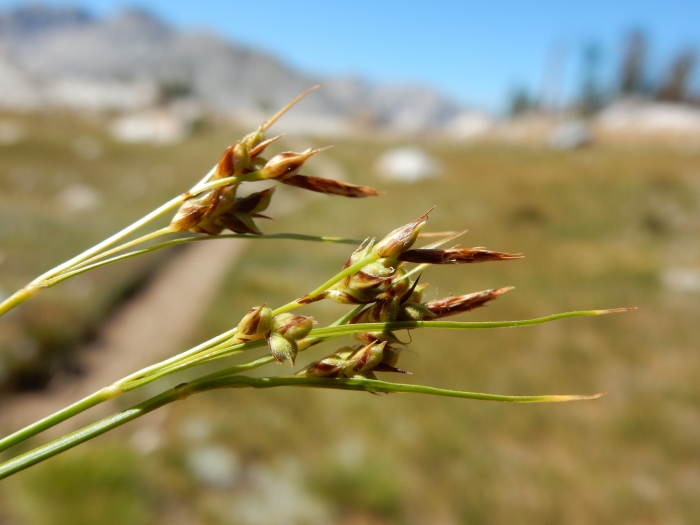Ross’s Sedge
(Carex rossii)
Ross’s Sedge (Carex rossii)
/
/

Matt Lavin
CC BY 4.0
Image By:
Matt Lavin
Recorded By:
Copyright:
CC BY 4.0
Copyright Notice:
Photo by: Matt Lavin | License Type: CC BY 4.0 | License URL: http://creativecommons.org/licenses/by/4.0/ | Rights Holder: Matt Lavin | Publisher: iNaturalist | Date Created: 2018-07-25T11:45:04-07:00 |

























Estimated Native Range
Summary
Carex rossii, commonly known as Ross’s sedge, is a perennial herbaceous plant native to a variety of habitats including moist meadows, open woodlands, and alpine regions in western North America, from Alaska to New Mexico and California. It typically forms dense clumps or solid mats of slender, grass-like stems that can reach up to 16 inches in height, emerging from a shallow rhizome network. The plant’s inflorescences are characterized by staminate (male) spikes positioned above more rounded pistillate (female) spikes, with flowering occurring in May and June. The flowers are not particularly showy but are interesting upon close inspection.
Ross’s sedge is valued for its ability to colonize and stabilize soil in disturbed areas, making it useful for restoration projects and erosion control. It is also used in rain gardens and as a ground cover in naturalized plantings. This sedge prefers full sun to part shade and can tolerate a range of soil types, provided they are well-draining. It is relatively low maintenance and can be a good choice for gardeners looking to create a meadow or prairie-like setting. While generally disease-free, it can occasionally suffer from rust or fungal leaf spots. Ross’s sedge is not known for being invasive and is a beneficial addition to native plant gardens.CC BY-SA 4.0
Ross’s sedge is valued for its ability to colonize and stabilize soil in disturbed areas, making it useful for restoration projects and erosion control. It is also used in rain gardens and as a ground cover in naturalized plantings. This sedge prefers full sun to part shade and can tolerate a range of soil types, provided they are well-draining. It is relatively low maintenance and can be a good choice for gardeners looking to create a meadow or prairie-like setting. While generally disease-free, it can occasionally suffer from rust or fungal leaf spots. Ross’s sedge is not known for being invasive and is a beneficial addition to native plant gardens.CC BY-SA 4.0
Plant Description
- Plant Type: Grass
- Height: 0.5-1 feet
- Width: 0.5-1 feet
- Growth Rate: Moderate
- Flower Color: N/A
- Flowering Season: Spring, Summer, Fall
- Leaf Retention: Evergreen
Growth Requirements
- Sun: Full Sun, Part Shade
- Water: Medium
- Drainage: Fast, Medium
Common Uses
Bee Garden, Bird Garden, Border Plant, Butterfly Garden, Deer Resistant, Erosion Control, Low Maintenance, Water Garden
Natural Habitat
Moist meadows, open woodlands, and alpine regions
Other Names
Common Names: Ross’ Carex, Bracted Sedge, Ross’s Sedge, Shortstemmed Sedge, Short Sedge
Scientific Names: , Carex rossii, Carex brevipes, Carex deflexa var. farwellii, Carex deflexa var. media, Carex deflexa var. rossii, Carex deflexa var. rossii, Carex diversistylis, Carex farwellii, Carex globosa var. brevipes
GBIF Accepted Name: